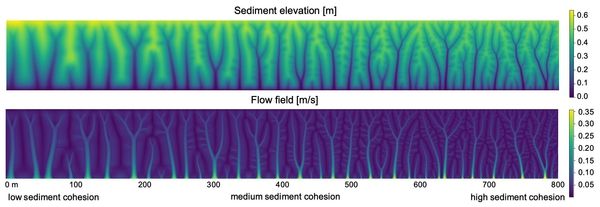R.C. van de Vijsel1,2*, J. van Belzen1,3, D. van der Wal1,4, T.J. Bouma1,5, J. van de Koppel1,2
1 NIOZ Royal Netherlands Institute for Sea Research, Department Estuarine and Delta Systems, and Utrecht University, Yerseke, This email address is being protected from spambots. You need JavaScript enabled to view it., This email address is being protected from spambots. You need JavaScript enabled to view it., This email address is being protected from spambots. You need JavaScript enabled to view it., This email address is being protected from spambots. You need JavaScript enabled to view it., This email address is being protected from spambots. You need JavaScript enabled to view it.
2 University of Groningen, Groningen Institute for Evolutionary Life Sciences
3 Ecosystem Management Research Group, University of Antwerp
4 Faculty of Geo-Information Science and Earth Observation (ITC), University of Twente
5 Department of Physical Geography, Faculty of Geosciences, Utrecht University
Introduction and methods
Estuaries are changing rapidly due to climate change and direct human interventions, urging for indicators of critical transitions causing loss or recovery of valuable biostabilising ecosystems (e.g., algal biofilms, vegetation). Self-organisation theory provides an indicator framework based on spatial patterns that can be observed in many natural systems. We lay the foundations for deriving an intertidal indicator system by constructing an idealised numerical model that couples the dynamics of water flow, morphology and biostabilisers.
Results
Model simulations show that self-organisation due to one scale-dependent feedback explains a wide range of intertidal drainage structures. This scale-dependent feedback consists of a local positive feedback due to sediment biostabilisation and a scour-induced long-range negative feedback. These feedbacks create regularly spaced, linear drainage channels around biostabilised banks. Weak feedbacks (e.g., when sediment cohesion in the system is low) create a flat drainage landscape. Stronger feedbacks create steeper channel banks, inducing flow and hence a secondary drainage pattern across these primary channel banks. This “cascade” of scale-dependent feedbacks can hence form complex drainage morphologies (Figure 1).
Implications
Our results point out the degree of drainage pattern complexity (flat, linear, higher-order) as an important indicator for intertidal ecosystem transitions, as its biostabilisers strongly rely on drainage. Moreover, our findings may provide insight in how landscapes formed in biofilm-dominated ecosystems in the Precambrian and how they changed through geological time, after the evolution of higher plants.

Figure 1 Top view on simulated drainage topography (m) and flow speeds (m/s) along a gradient of (to the right) increasing sediment cohesion. Outflow occurs through the lower boundary; the other boundaries are closed.










